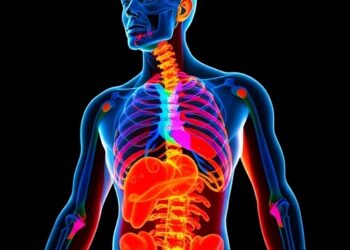Whether it’s physical phenomena, share prices or climate models – many dynamic processes in our world can be described mathematically with the aid of partial differential equations. Thanks to stochastics – an area of mathematics which deals with probabilities – this is even possible when randomness plays a role in these processes. Something researchers have been working on for some decades now are so-called stochastic partial differential equations. Working together with other researchers, Dr. Markus Tempelmayr at the Cluster of Excellence Mathematics Münster at the University of Münster has found a method which helps to solve a certain class of such equations. The results have been published in the journal Inventiones Mathematicae.
Whether it’s physical phenomena, share prices or climate models – many dynamic processes in our world can be described mathematically with the aid of partial differential equations. Thanks to stochastics – an area of mathematics which deals with probabilities – this is even possible when randomness plays a role in these processes. Something researchers have been working on for some decades now are so-called stochastic partial differential equations. Working together with other researchers, Dr. Markus Tempelmayr at the Cluster of Excellence Mathematics Münster at the University of Münster has found a method which helps to solve a certain class of such equations. The results have been published in the journal Inventiones Mathematicae.
The basis for their work is a theory by Prof. Martin Hairer, recipient of the Fields Medal, developed in 2014 with international colleagues. It is seen as a great breakthrough in the research field of singular stochastic partial differential equations. “Up to then,” Markus Tempelmayr explains, “it was something of a mystery how to solve these equations. The new theory has provided a complete ‘toolbox’, so to speak, on how such equations can be tackled.”
The problem, Tempelmayr continues, is that the theory is relatively complex, with the result that applying the ‘toolbox’ and adapting it to other situations is sometimes difficult. “So, in our work, we looked at aspects of the ‘toolbox’ from a different perspective and found and proved a method which can be used more easily and flexibly.” The study, in which Markus Tempelmayr was involved as a doctoral student under Prof. Felix Otto at the Max Planck Institute for Mathematics in the Sciences, published in 2021 as a pre-print. Since then, several research groups have successfully applied this alternative approach in their research work.
Stochastic partial differential equations can be used to model a wide range of dynamic processes, for example the surface growth of bacteria, the evolution of thin liquid films, or interacting particle models in magnetism. However, these concrete areas of application play no role in basic research in mathematics as, irrespective of them, it is always the same class of equations which is involved. The mathematicians are concentrating on solving the equations in spite of the stochastic terms and the resulting challenges such as overlapping frequencies which lead to resonances.
Various techniques are used for this purpose. In Hairer’s theory, methods are used which result in illustrative tree diagrams. “Here, tools are applied from the fields of stochastic analysis, algebra and combinatorics,” explains Markus Tempelmayr. He and his colleagues selected, rather, an analytical approach. What interests them in particular is the question of how the solution of the equation changes if the underlying stochastic process is changed slightly.
The approach they took was not to tackle the solution of complicated stochastic partial differential equations directly, but, instead, to solve many different simpler equations and prove certain statements about them. “The solutions of the simple equations can then be combined – simply added up, so to speak – to arrive at a solution for the complicated equation which we’re actually interested in.” This knowledge is something which is used by other research groups who themselves work with other methods.
Journal
Inventiones mathematicae
Article Publication Date
14-Jun-2024




